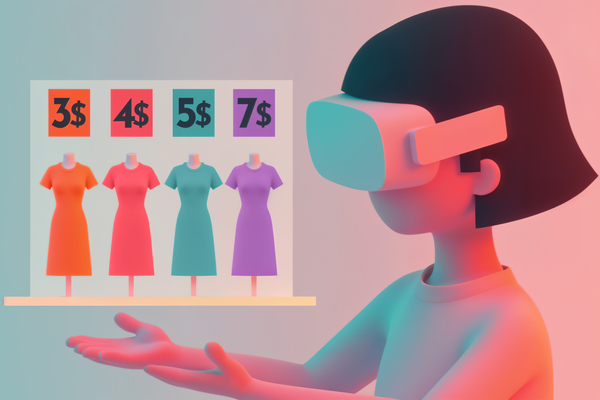How Technology is Revolutionizing Fashion in 2025
The fusion of fashion and technology is transforming the industry in unprecedented ways. In 2025, innovations are not only reshaping how we design, produce, and consume clothing but also enhancing sustainability, personalization, and shopping experiences.

Let’s explore the most exciting technological advancements revolutionizing fashion today.
1. Smart Fabrics and Wearables
Smart textiles embedded with sensors and responsive materials are becoming mainstream. Examples include:
- Fabrics that regulate temperature based on body heat.
- Clothes that monitor health metrics like heart rate and posture.
- Materials that change color or texture with environmental conditions.
These innovations blend functionality and style seamlessly.
2. 3D Printing in Fashion
3D printing allows designers to create complex, customized garments and accessories with minimal waste.
This technology supports made-to-order production, reducing overstock and allowing for unique, intricate designs that traditional methods can’t easily achieve.
What Else Would You Like to Know?
Choose below:
3. Virtual and Augmented Reality Shopping
Virtual try-ons and AR-powered fitting rooms enable customers to see how clothes will look and fit without visiting a store physically.
This enhances online shopping by reducing returns and increasing satisfaction.
4. Digital Fashion and NFTs
Digital fashion—clothing designed for virtual avatars or social media—has exploded in popularity. NFTs (non-fungible tokens) enable ownership of unique digital pieces.
This new frontier creates a fresh market for fashion innovation and self-expression in digital spaces.
5. AI and Data-Driven Design
Artificial intelligence analyzes trends, customer preferences, and sales data to inform design decisions.
AI tools help brands forecast demand more accurately, reducing waste and optimizing collections for consumers.
6. Supply Chain Transparency and Blockchain
Blockchain technology improves supply chain transparency by tracking materials from source to sale.
Consumers can verify ethical sourcing and sustainability claims, boosting trust and accountability.
7. Robotics and Automation
Robots assist in manufacturing, cutting, and packaging garments, increasing efficiency and precision.
Automation supports sustainable production by minimizing errors and material waste.
8. Personalized Shopping Experiences
AI-powered chatbots and styling assistants offer personalized recommendations based on individual preferences and past purchases.
This enhances customer engagement and creates a tailored shopping journey.
9. Sustainable Innovations Enabled by Tech
Technology aids sustainability through:
- Efficient fabric recycling processes.
- Waterless dyeing techniques.
- Biodegradable materials developed in labs.
These advances help the industry reduce its environmental impact.
10. The Future Outlook
Technology will continue to shape fashion’s evolution, fostering creativity, sustainability, and inclusivity.
The integration of physical and digital fashion experiences promises to redefine style in exciting ways.
Final Thoughts: Embrace the Tech-Style Revolution
In 2025, technology is no longer just a tool but a driving force behind fashion innovation. Staying informed about these trends helps you engage with a more sustainable, personalized, and futuristic wardrobe.
Explore tech-enhanced fashion with curiosity and open-mindedness—you’ll be part of the next big style revolution.
The Importance of Fashion in Human History: More Than Just Clothing
» See exclusive tips for your home







